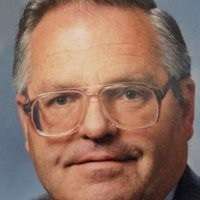Master Validation Plan - The Unwritten Requirements Webinar Description
FDA Warning Letters and recent high-profile recalls indicate major cGMP deficiencies in many companies. One major failing is lack of sufficient or targeted risk-based company-wide V&V planning. Starting with a Master Validation Plan, evaluating its elements against ISO 14971 hazard analysis / risk management, allows development of meaningful product validations. The roles of different V&V protocols.
How to employ equipment / process DQs, IQs, OQs, and PQs, or their equivalents per ASTM E2500, against a background of limited company resources (personnel, budget, time). A matrix simplifies "as-product", "in-product", process, and equipment, et al, software V&VT, assuring key FDA requirements are not overlooked.
What is the FDA definition of "risk based" and how is it documented in the V&V test report. Additional recommended supporting systems / documentation. The QMS / CGMP and 21 CFR Part 11 must also be considered.
Why Should You Attend
Verification and validation requirements have always been part of the US FDA's GMPs.However, with increasing technology, both industry and regulatory agencies expectations have increased. Recent high-profile field problems indicate that V&V activities are not planned or carried out as completely as expected, are not documented in a top tier Master Validation Plan, and may not be fully utilizing the power of current risk management tools, as identified in ISO 14971.
The FDA / ICH Q-series provide valuable insights for all regulated industries, not just pharma. The billions of dollars spent by industry annually for V&V are not providing the product safety or efficacy seemingly promised. For most companies, the fixes are not rocket-science, but proper up-front V&V planning and execution, documented in a corporate MVP and implemented by other V&V documents.
Webinar Takeaway
- Verification or Validation - Recent regulatory expectations
- The Master Validation Plan and its structure
- Product Validation - how it differs from process / equipment V&V
- Process / Equipment / Facility Validation including FDA's recent guidance
- "Requirments" - the Start of V&V
- When and How to use DQ, IQ, OQ, PQ, or their equivalents
- How to use Product Risk Management Tools (per ISO 14971 and ICH Q9)
- The New 10 key documents for software validation; Cybersecurity
- Incorporating 21 CFR Part 11 requirements
- Suggested "test case" formats
Training Agenda
11:00 – 11:05 Intro 5 mins
11:05 – 11:20 1: VMP, The Unwritten Requirements ~75 mins 70 slides
Verification and Validation – defined
VMP Planning and the VMP
Individual Validation Plan / Test Report
Requirements
DQ, IQ, OQ, PQs: Test Cases, Examples
Determine the number of PQs – no “rule of threes”
Software V&V documentation
11:20 – 11:30 Break/Q&A 10 mins
11:30 – 12:10 2: Risk ~40 mins 46 slides
Mandatory
ISO 14971 and ICH Q9
What Risk Is, and Isn’t
The Risk Management File
Narrative; Hazards List, FTA, D-, P-, and U-FMECAs
12:10 – 12:50 3: Use Engineering ~40 mins 40 slides
Used “as needed”
IEC 62366-1, -2
A Human Factors / Use Engineering “Process”
The 9 Stages
The UE File
12:50 -- 13:00 Q&A ~10 mins
(and Summation)
End
Note: Slide numbers per section are approximate.
Who Will Benefit
- Senior Management in Drugs, Devices, Biologics, Dietary
- Supplements
- QA
- RA
- R&D
- Engineering
- Production
- Operations
- Consultants, Others tasked with Product, Process, Software Validation Responsibilities
This live training webinar includes the following for each registered attendee:
- A copy of the presentation slides by download
- A certificate of participation for attendee training records
- 3 Hrs Live Online Instructor Led Training
-
Q/A Session

Faculty John E Lincoln
Principal, J E Lincoln and Associates
John E. Lincoln, is Principal of J. E. Lincoln and Associates LLC, a consulting company with over 41 years experience in U.S. FDA-regulated industries, 27 years as head of his own consulting company. John has worked with companies from start-up to Fortune 100, in the U.S., Mexico, Canada, France, Germany, Sweden, China and Taiwan. He specializes in quality assurance, regulatory affairs, QMS problem remediation and FDA responses, new / changed product 510(k)s, process / product / equipment including QMS and software validations, ISO 14971 product risk management files / reports, Design Control / Design History Files, Technical Files. He's held positions in Manufacturing Engineering, QA, QAE, Regulatory Affairs, to the level of Director and VP (R&D). In addition, John has prior experience in military, government, electronics, and aerospace. He has published numerous articles in peer reviewed journals, 5 chapters in the RAPS textbook on validation, conducted workshops and webinars worldwide on CGMP subjects. John is a graduate of UCLA.


